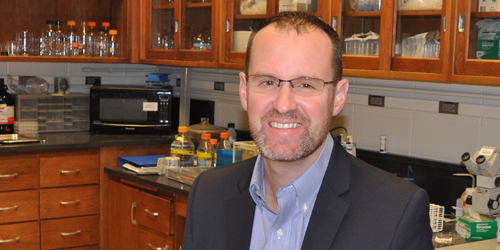
By Mary Kemper
For the first time in its 75 years of research, the topic of spreading depolarization has received its own special issue in the Journal of Cerebral Blood Flow & Metabolism. Guest editors of the Brain Injury Depolarizations issue are Jed Hartings, PhD, Research Associate Professor at the University of Cincinnati and a grant recipient of the Mayfield Education and Research Foundation, and Jens Dreier, MD, of Charité University Medicine Berlin, Germany. The issue is groundbreaking; the topic is hot and mainstream.
Groundbreaking are the latest updates in global efforts toward a translational science in neuroprotection: that is, from laboratory research to experimental treatment after brain injury. Routine monitoring at a patient’s bedside could eventually track the culprit of spreading depolarizations. Researchers could then define a personalized intervention to stop further brain damage.
Spreading depolarizations, sometimes called brain tsunamis, resurged as a hot topic in neuroscience. Both seizures and spreading depolarizations were discovered in the 1940s. While the field of seizures took off, spreading depolarization (then known as spreading depression) became a niche study. This slowed both the science of how these electrical disturbances form and spread through the brain after injury, and the treatment to prevent this spread that wreaks havoc on brain tissue.
However, since the early 2000s, the Co-operative Studies on Brain Injury Depolarizations (COSBID) has reinvigorated this field. They committed to advancing research and clinical studies. After more than a decade of clinical studies, the COSBID group proved that spreading depolarizations are common after stroke or trauma, sometimes more than 4-fold compared with seizures. The COSBID researchers proved how these tsunami-like waves of destruction could be tracked, even in real time.
With Mayfield Foundation funds, Dr. Hartings and his research team piloted a noninvasive method using electroencephalography (EEG) to record the path of these waves. Electrodes placed on the scalp of the brain-injured patient eliminated the need for direct contact on the brain surface. Being minimally invasive freed up research to advance real-time monitoring at the bedside.
As research exploded, COSBID recognized a need to bring precision, a cohesion, to their field. This special issue addresses that.
Dr. Hartings himself, with COSBID collaborators from more than a dozen countries, contributed two articles in this issue. “From the beginning, our research received funding by Mayfield Foundation,” he says. “Its support ultimately helped to make this issue possible. Our two articles received Mayfield grants. The first article reviews the 75-year history of this field of study. The second is a first-time, step-by-step guide for researchers on how to monitor and study these brain tsunamis. We set guidelines on the best way to score the severity of injury, interpret brain EEG, and follow the patient with this secondary injury after stroke or trauma.
“We now have a common language, a standard of care by a global community of researchers and clinicians worldwide to guide our next discoveries,” Dr. Hartings concludes.
# # # # #
The Mayfield Education & Research Foundation is dedicated to the advancement of care and new treatments for patients with brain and spine disorders, to the prevention of neurological injury through community education, and to the development of neurosurgeons through ongoing training and education. Established in 1978, the Foundation mirrors and furthers the legacy and impact of the Mayfield Clinic.